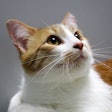
While cat obesity became more prevalent from 1981 to 2016, the rate of increase seems to have slowed during the past decade. Scientists examined the electronic medical records of more than 19 million cats in the United States and Canada, although only approximately 10 million had more than one record. The Journal of the American Veterinary Medical Association published the study “Investigation of relationships between body weight and age among domestic cats stratified by breed and sex.”
“While we did find that cat weight on average has increased from the 90's to now, it hasn't increased as steadily the past decade,” said Adam Campigotto, DVM of University of Guelph, told Petfood Industry.
Over the period covered by the study, pet food companies also started offering more weight-control cat food options with higher palatability. Awareness among the public and veterinarians of cat obesity also grew. These and other factors may have contributed to slow rate of increase in cat obesity.
“I know many cat food companies have options for weight loss and weight management so I think it is important for owners to speak to their veterinarians and develop weight goals for their animals, to help help keep our pets healthy longer.”
While helping older cats live longer in better condition may be the ultimate goal, monitoring younger cats can help prevent the problem before it starts. However, the study results suggest that many cat owners may not bring their cats to the veterinarian repeatedly, especially after the first year.
“Not only are there concerns about obesity but later in life when many cats get chronic kidney disease or hyperthyroidism, being aware of the weight loss can be just as important as focusing on the weight gain earlier in life.”
Cat body weight by breed and age
The electronic medical records were divided by breed and analyzed by age and weight.
The four most common recognized breeds (Siamese, Persian, Himalayan, and Maine Coon Cat) peaked in mean body weight at between six to 10 years of age and then declined.
Mean body weight for short, medium and longhair cats peaked at eight years and was subjectively higher for neutered than for sexually intact cats. Neutered eight-year-old cats’ mean body weight increased between 1995 and 2005 but was steady between 2005 and 2015.

















